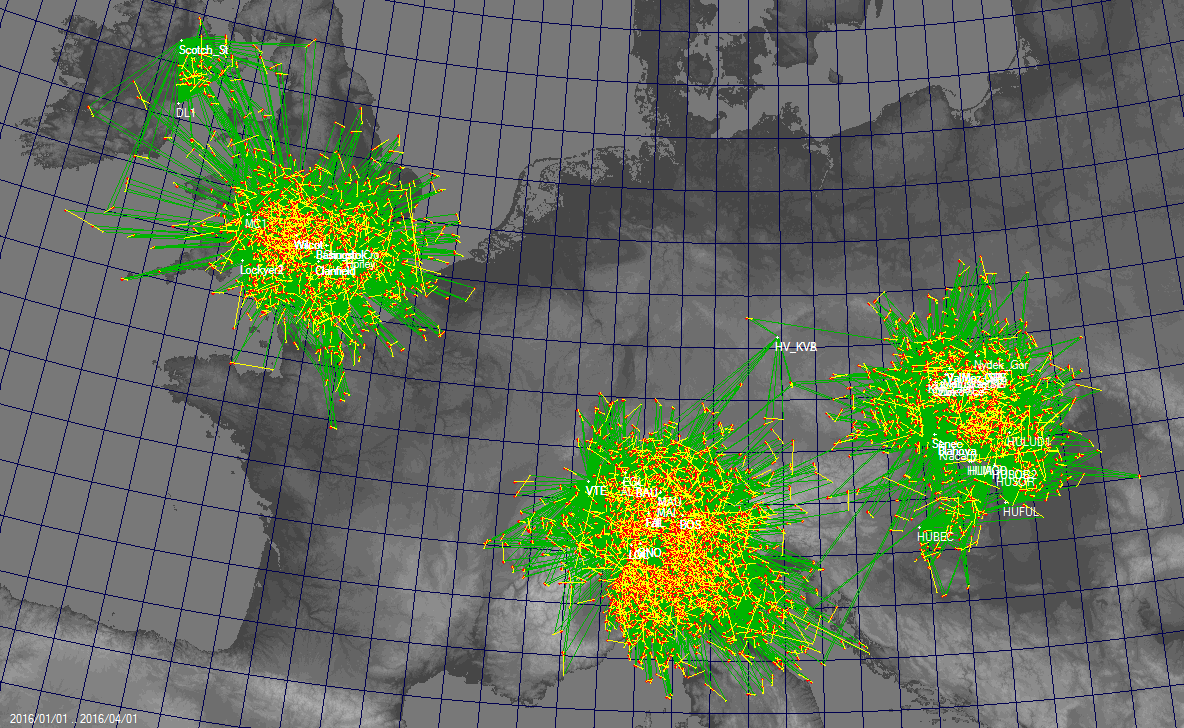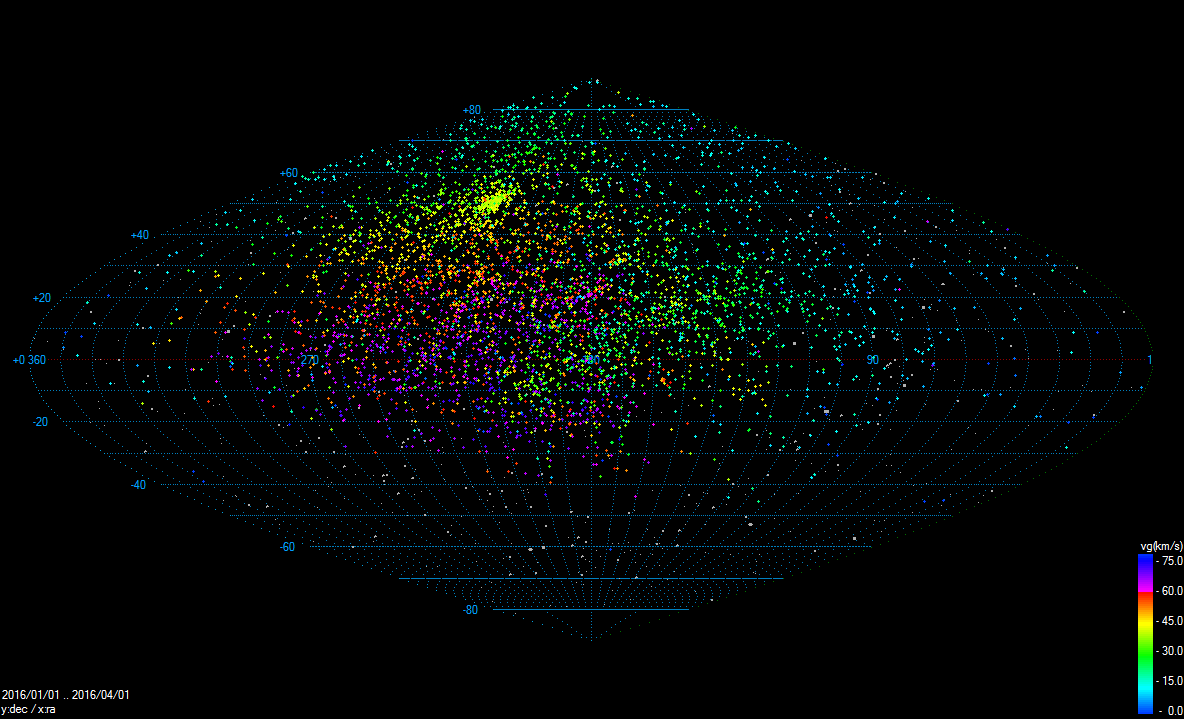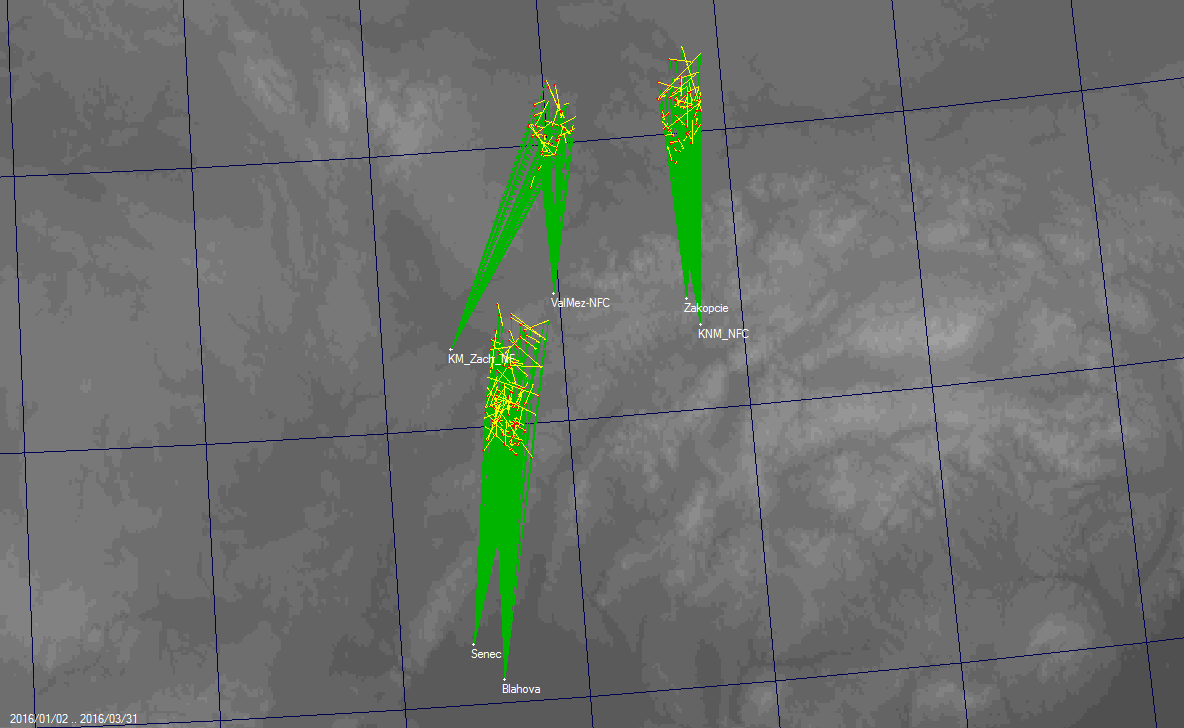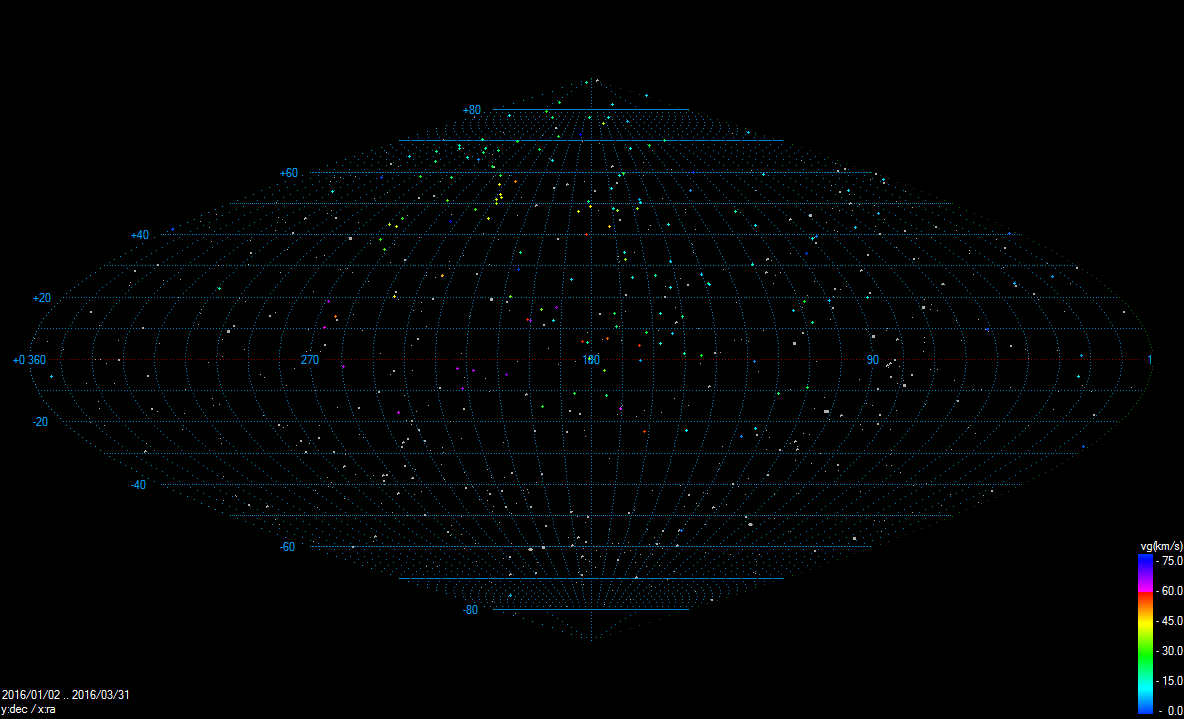Introduction
The weather in the first third of the year 2016 in Europe was not favorable. Nowadays (May 26, 2016) there are in the EDMOND database (Kornoš et al., 2014a) data from the following networks: CEMeNt (Central European Meteor Network, cross-border network of Czech and Slovak amateur observers); FMA (Fachgruppe Meteorastronomie, Switzerland); HMN (Hungarian Meteor Network or Magyar Hullócsillagok Egyesulet, Hungary); NEMETODE (Network for Meteor Triangulation and Orbit Determination, United Kingdom) and UKMON (UK Meteor Observation Network, United Kingdom). The presented results are thus partial and they do not include results of all national networks from the first third of the year 2016.
Results (wide-angle cameras)
During the first third of year 2016 all 99 working stations (of the networks listed above) registered together 25 536 individual meteors. For 4 479 paired meteors it was possible to calculate trajectories in the atmosphere and meteoroid’s orbits in the Solar system. A ground map (projection of the meteor atmospheric trajectory on the ground) for these paired meteors is shown on Figure 1 and a map of the radiants of these paired meteors is shown on Figure 2. Most were sporadic meteors (3 208 orbits), with others belonging to known showers – QUA (Quadrantids, 214 orbits), COM (Dec. Comae Berenicids, 71 orbits), ECV (eta Corvids, 27), TBO (12 Bootids, 27), LBO (lambda Bootids, 26), FPL (February pi Leonids, 24), JLL (January lambda Leonids, 23), XUM (Xi Ursae Majorids, 21), NBO (nu Bootids, 20), PVI (January pi Virginids, 20) and other meteor showers with one or more orbits from IAU MDC working list (Jopek et al., 2014).
 |
| Figure 1 – Ground map (projection of the meteor atmospheric trajectory on the ground) of the multi-station meteor orbits. |
 |
| Figure 2 – Map of the radiants of the multi-station orbits. Map is in the equatorial coordinate system, the center is located at position RA=180°/DEC=0°. |
Results (narrow field cameras)
During the first third of year 2016 all 6 working stations registered together 766 individual meteors. For 152 paired meteors it was possible to calculate very accurate trajectories in the atmosphere and meteoroid’s orbits in the Solar system. A ground map (projection of the meteor atmospheric trajectory on the ground) for these paired meteors is shown on Figure 3 and a map of the radiants of these paired meteors is shown on Figure 4. Most were sporadic meteors (126 orbits), with others belonging to known showers – QUA (Quadrantids, 3 orbits), PVI (January pi Virginids, 2 orbits), NBO (nu Bootids, 2), FHE (f Herculids, 2) and other meteor showers with one orbit from IAU MDC working list (Jopek et al., 2014).
 |
| Figure 3 – Ground map (projection of the meteor atmospheric trajectory on the ground) of the two-station meteor orbits. |
 |
| Figure 4 – Map of the radiants of the two-station orbits. Map is in the equatorial coordinate system, the center is located at position RA=180°/DEC=0°. |
References
Kornoš L., Koukal J., Piffl R., and Tóth J. (2014a). “EDMOND Meteor Database”. Proceedings of the International Meteor Conference, Poznań, Poland, Aug. 22-25, 2013, eds. Gyssens M., Roggemans P., International Meteor Organization, pages 23-25.
Jopek T. J., Kanuchova Z. (2014). “Current status of the IAU MDC Meteor Shower Database”. Proceedings of the Meteoroids 2013 Conference, Aug. 26-30, 2013, A.M. University, Poznań, Poland, eds. Jopek T.J., Rietmeijer F.J.M., Watanabe J., Williams I.P., A.M. University Press, 2014, pages 353-364.

